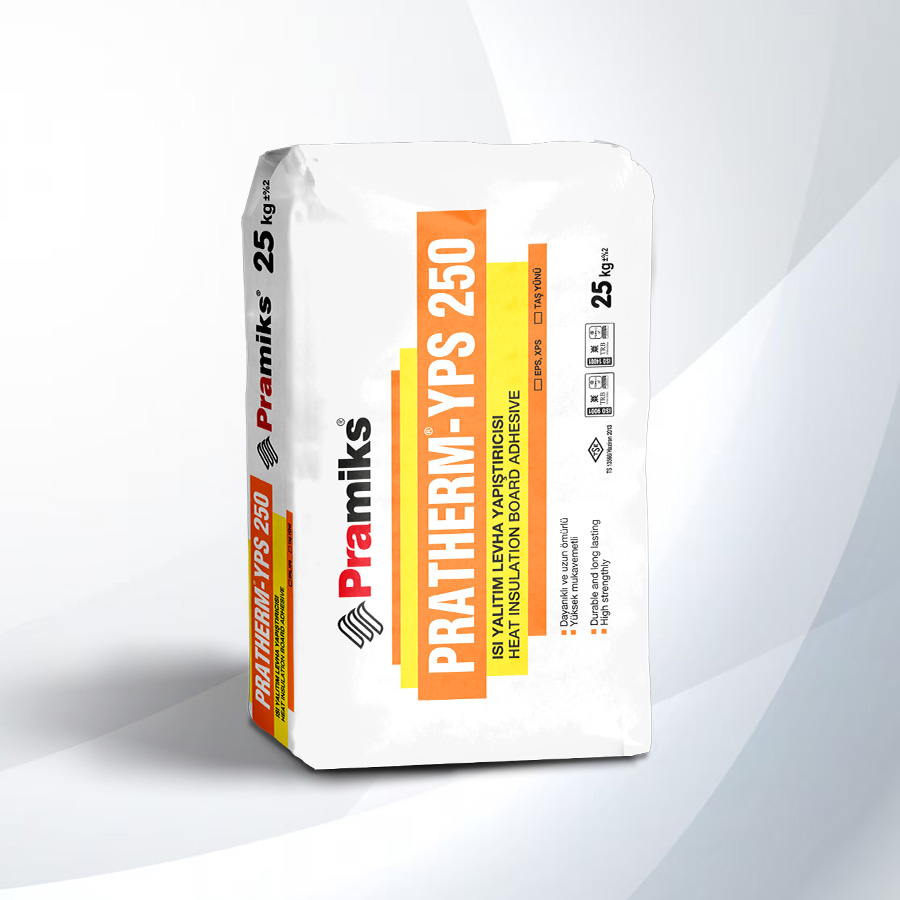Belgelerimiz

PRODUCTS
PRATECH® YPS250
EPS Board Adhesive
It is a single-component, polymer-reinforced, cement-based adhesive mortar used in ETICS (External Thermal Insulation Composite Systems) for bonding polystyrene-based thermal and sound insulation boards such as XPS (Extruded Polystyrene) and EPS (Expanded Polystyrene) on surfaces like rough and fine plaster, concrete, and brick.
- Provides excellent adhesion on concrete, brick, aerated concrete, and plastered surfaces
- Suitable for vertical, horizontal, and ceiling applications in both indoor and outdoor environments.
- Resistant to thermal shocks and flexible
- Not affected by water, easy to prepare and apply
Details
Details
Technical Specifications
|
|
|
|---|---|
| Compressive Strength | > 6 N/mm² |
| Flexural Strength | ≥ 2 N/mm² |
| Material Structure | Cement-based product |
| Mixture Density | 1.60 kg/lt |
| Water Mixing Ratio | ~ 6.25 liters (25 kg powder) |
| Working Time | 1 hour |
| Application Thickness | Min 3 – Max 8 mm |
| Tensile Strength | > 0.80 N/mm² (from concrete after 28 days) |
| Tensile Strength | ~ 0.50 N/mm² (from board after 28 days) |
| Consumption | The recommended consumption amount for m² application is 4.0 – 5.0 kg. This value may vary depending on surface and environmental conditions. |
| Packaging | 25 Kg. Kraft bag |